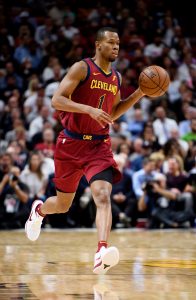The NBA G League will move one step closer to having 30 teams, one for each NBA franchise, in the 2018/19 season. With the expansion Capital City Go-Go club joining the mix, we can add the Wizards to the list of NBA teams with their own affiliates.
The Wizards’ NBAGL affiliate will be the league’s 27th franchise, leaving just three NBA teams that don’t have a one-to-one relationship with a G League club. Those teams are the Trail Blazers, Pelicans, and Nuggets.
The Pelicans had initially hoped to have a new G League team of their own in place for the 2018/19 season, but their timetable was delayed. It will likely just be a matter of time until New Orleans launches an NBAGL affiliate, and Portland and Denver probably won’t be far behind.
For 2018/19, here’s the full list of G League affiliates:
Atlanta Hawks: Erie BayHawks
Boston Celtics: Maine Red Claws
Brooklyn Nets: Long Island Nets
Charlotte Hornets: Greensboro Swarm
Chicago Bulls: Windy City Bulls
Cleveland Cavaliers: Canton Charge
Dallas Mavericks: Texas Legends
Detroit Pistons: Grand Rapids Drive
Golden State Warriors: Santa Cruz Warriors
Houston Rockets: Rio Grande Valley Vipers
Indiana Pacers: Fort Wayne Mad Ants
Los Angeles Clippers: Agua Caliente Clippers of Ontario
Los Angeles Lakers: South Bay Lakers
Memphis Grizzlies: Memphis Hustle
Miami Heat: Sioux Falls Skyforce
Milwaukee Bucks: Wisconsin Herd
Minnesota Timberwolves: Iowa Wolves
New York Knicks: Westchester Knicks
Oklahoma City Thunder: Oklahoma City Blue
Orlando Magic: Lakeland Magic
Philadelphia 76ers: Delaware Blue Coats (new nickname)
Phoenix Suns: Northern Arizona Suns
Sacramento Kings: Stockton Kings (relocation)
San Antonio Spurs: Austin Spurs
Toronto Raptors: Raptors 905
Utah Jazz: Salt Lake City Stars
Washington Wizards: Capital City Go-Go (expansion)

 Will the Cavaliers re-sign
Will the Cavaliers re-sign  Consider the case of
Consider the case of